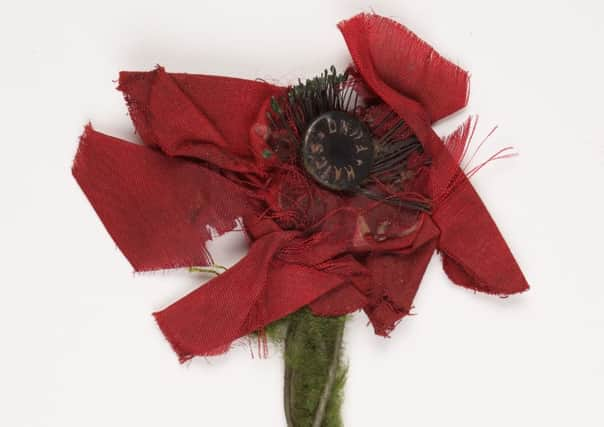Living with the aftermath of the Great War


Over the past four years there have been numerous exhibitions commemorating the First World War, but a new show opening in Leeds next week looks beyond the conflict and assesses its immediate and long-term effects socially, politically and in the domestic sphere.
Goodbye to All that? Legacies of the First World War, at the University of Leeds’ Treasures of the Brotherton gallery, investigates what happened after the guns fell silent on the Western Front. Could life ever really return to ‘normal’? Through the personal stories of local people in Leeds, Yorkshire and beyond, the exhibition covers themes such as grief, memory, disability, women’s rights, migration and healthcare, all of which still resonate today.
Advertisement
Hide AdAdvertisement
Hide Ad“We wanted to focus on families and to move away from the very masculine view of the First World War, so women and children were always going to be central to the exhibition,” says Alex Shaw, who curated the show alongside fellow PhD researcher Eilis Boyle and cultural historian Professor Alison Fell. Through personal effects, toys, letters, diaries and memoirs, a vivid picture emerges of the major shifts that took place on an individual level – every family lost somebody during the Great War – and in British society as a whole.
The curatorial team selected items from the University’s special collections. “We looked in particular at the 1918 Representation of the People Act and its limitations,” says Shaw. “There are some misconceptions around the Act as it was only some women, not all, who were given the vote at that time.”
In fact, it was another ten years before universal suffrage was achieved in Britain and this is also celebrated in the exhibition. “Some of my favourite pieces are the posters for the 1929 general election which was the first election that all women were allowed to vote. And we also have some ballot papers from the 1918 general election – it was a snap election in December 1918 and all the soldiers were still in France so they were given a postal vote.”
Many of the veterans made the conscious decision not to vote as they were, not unreasonably, angry that the government went ahead with the election before their return home. “We have letters from men saying that they felt marginalised,” says Shaw. “So a lot of the ballot papers were deliberately destroyed.”
Advertisement
Hide AdAdvertisement
Hide AdThere are stories of refugees – 250,000 Belgians fled to the UK after their country was invaded by Germany – and of women’s war work, both of which have contemporary socio-political resonances. One of several local stories featured is that of Sidney Charles Marriot, a young officer from Leeds who like many soldiers of the Great War kept special mementoes, in addition to official papers and medals.
“His personal collection includes a broken compass which took a German bullet, saving his life,” says Shaw. “And a chunk of granite from Ypres Cathedral which already in 1918 was seen as a key site of remembrance.” Also featured is the menu from a ‘Peace Dinner’ which Marriott attended at the Queens Hotel. “We really want people to come along and discover these local stories,” says Shaw. “They show what it was like for ordinary people living in a Northern city like Leeds after the First World War.”
At the Treasures of the Brotherton Gallery, University of Leeds, August 31 to January 31, 2019. Free entry.